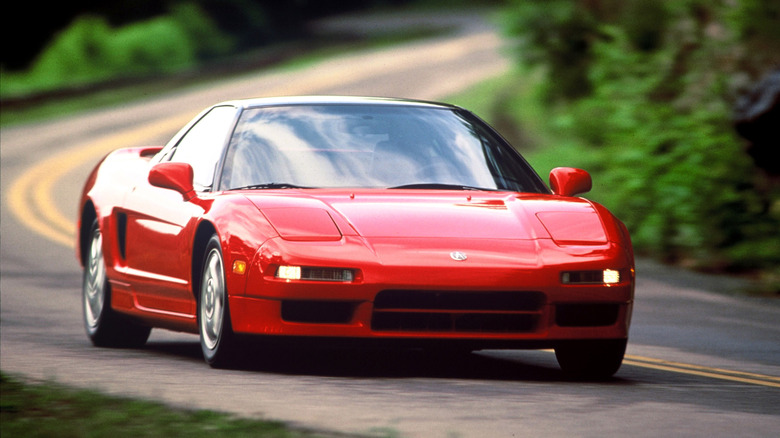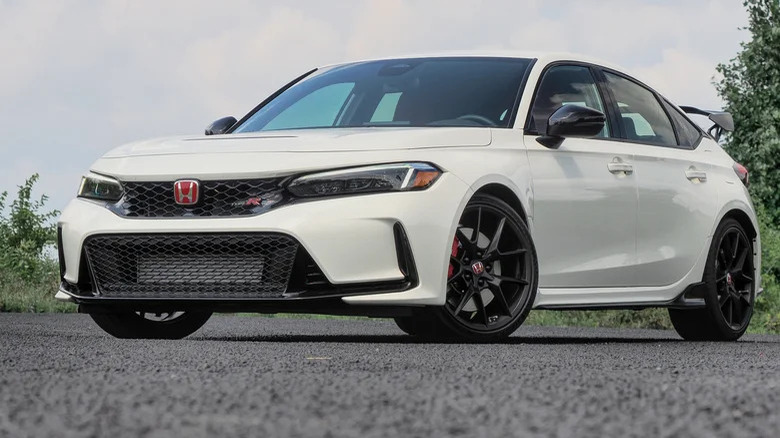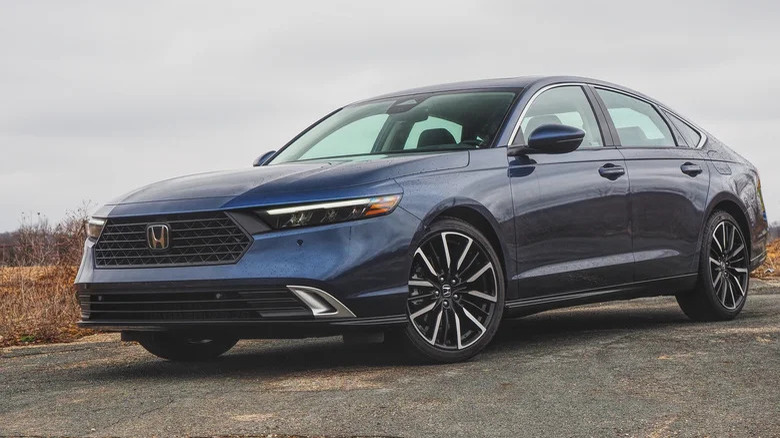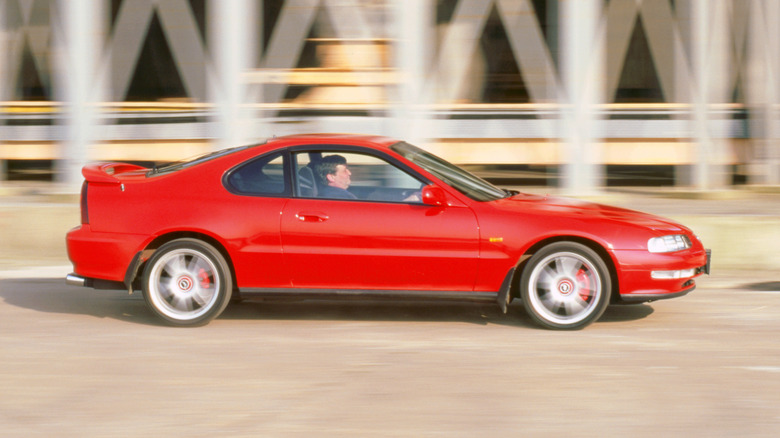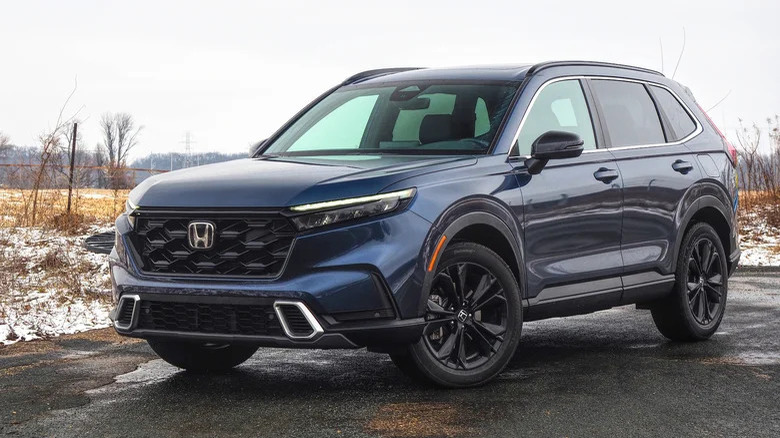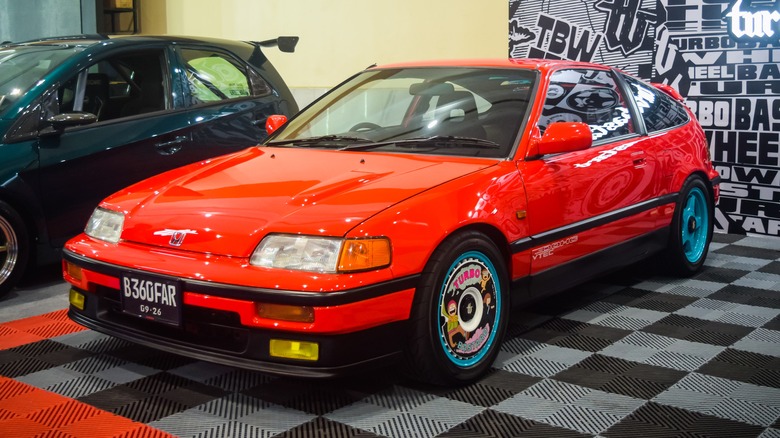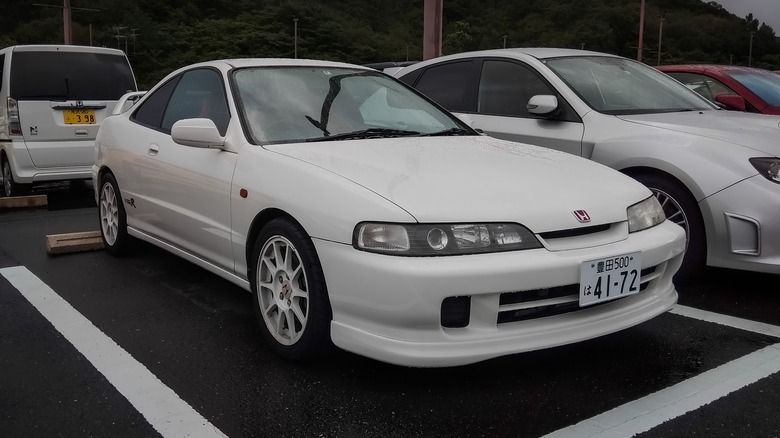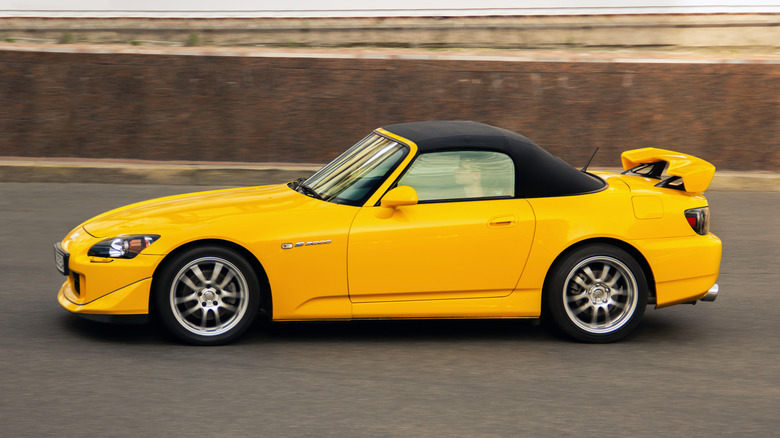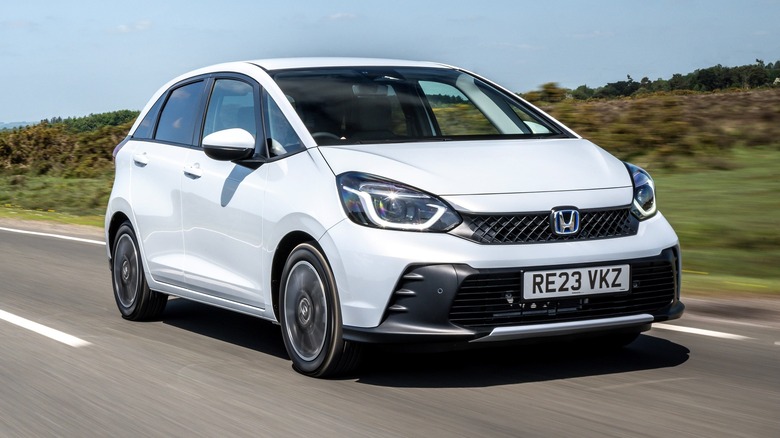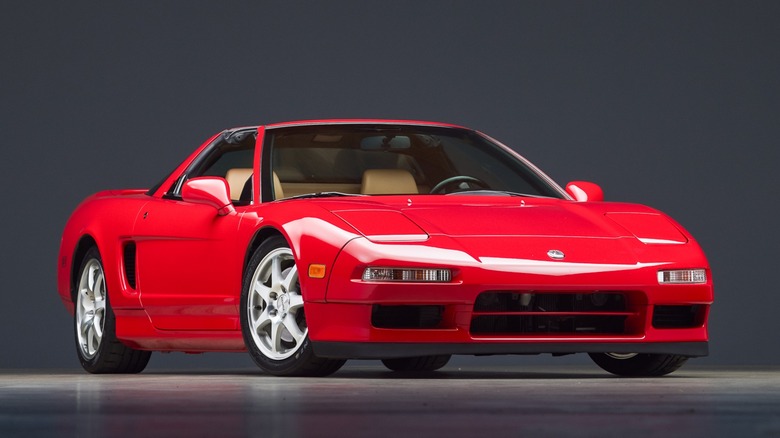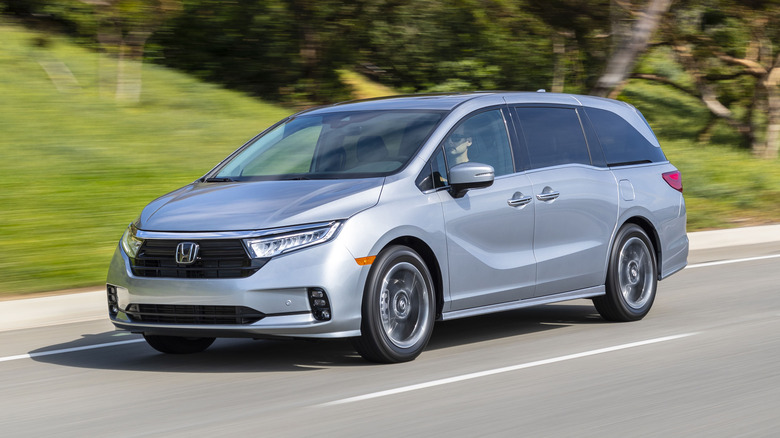10 Of The Most Successful Models In Honda History
Honda's rise from a small player in the Japanese car market to a global behemoth wasn't always guaranteed. At the start of the '70s, its finances were in dire straits thanks to a run of low-selling models, with production lines mostly empty and development cash running low. However, a string of successful models throughout the decade managed to turn the company's fortunes around, not only securing its future but catapulting it into the global limelight.
Despite reaching new sales heights, however, it seems that bosses always kept the company's near-death experience in mind, never content to rest on their laurels and always keen to innovate. As a result, Honda's most famous nameplates have remained consistently among the best in their respective segments, even after decades of constantly evolving competition. Alongside its biggest icons, Honda also boasts a number of less famous models that have proved successful in other ways. They have pioneered new design approaches, helped define entire segments, won over enthusiasts, or sometimes a mix of all three. Here are the company's greatest names so far.
Honda Civic
Few car nameplates carry as much global recognition as the Honda Civic. It's been in constant production since 1972, with each of its 11 generations never deviating too much from the original car's formula of efficiency, affordability, and practicality. With the launch of the Civic Type-R, Honda added a dash of performance into the mix, with each new iteration improving on the previous model's capabilities on both the road and the track.
The car's straightforward appeal has made it a consistent bestseller in many of the world's largest automotive markets, with Honda shifting more than 27 million examples in the Civic's first half-century on sale. The latest generation launched in 2022, with the top-spec variant in the range being the Civic Type-R. That car got a rare 10/10 score from SlashGear, with the reviewer finding almost nothing to dislike about the car's balance of performance chops and everyday usability. Despite the recent market swing away from small cars, it's safe to say that the Civic is in rude health and arguably better than ever.
Honda Accord
The Accord is another of Honda's most long-running nameplates, having been in constant production since 1976. Much like the Civic, it has seen 11 generations to date, with a steady evolution between each. Although the Accord is most recognized as a sedan, it was initially developed as a three-door hatchback, designed to be a more upmarket alternative to the Civic. However, the sedan variant, introduced in 1979, became the top choice with buyers by the time the second generation of the car debuted in 1981.
For its first few generations, the Accord remained largely the same across every region in which it was sold, but with the launch of the sixth-generation car in 1997, a new strategy was piloted. Honda built different Accords for Europe, Asia, and America, each with mechanical and stylistic differences designed to appeal to buyers in that region. Honda's American-market Accords were made in America, having become the first Japanese-badged car to be made in the U.S. in 1982.
The current generation Honda Accord might be very different under the hood compared to the original generation, with a hybrid powertrain now offered, but the car's appeal remains much the same as it always has been. Much like the CVCC engine that appeared in the first generation Accord, the latest Accord Hybrid's powertrain is unwaveringly efficient, while its cabin is both thoughtfully designed and suitably spacious.
Honda Prelude
Some consider the Prelude to be Honda's best kept secret, as it doesn't boast as high a profile as many of the brand's other nameplates despite being both influential and consistently popular throughout its life cycle. It started off slow — quite literally — in 1978, with the underpowered first generation of the car being replaced by a second generation in 1983. Honda's second try was significantly better than its first, with a respectable 110 horsepower on offer in top-spec variants.
The third-generation debuted in 1988 and featured some of Honda's best bubble era innovations, including a four-wheel steering system and a 2.0L DOHC engine for the Si that made 135 horsepower. The fourth and fifth generations continued to impress both journalists and buyers, and by the time the sporty coupe was retired in 2001, more than 800,000 examples had been sold. After a quarter century away, recent reports indicate that Honda is looking to launch a new generation of the Prelude as soon as 2026, although few details have been confirmed so far.
Honda CR-V
SUVs and crossovers have gone from being a fairly niche segment of the market a few decades ago to being some of the most popular body styles today. That rise has been in no small part down to the success of models like the Honda CR-V, which has remained a perennial bestseller since it was first launched in 1997. Honda's development team had spotted a gap in the market during the '90s, with buyers wanting the space and practicality that an SUV could give but not willing to compromise on car-like driving dynamics and comfort. The CR-V was designed to bridge that gap, becoming an early pioneer of the segment now most commonly referred to as the crossover.
The first-generation CR-V stuck closely to the traditional boxy SUV styling that was common at the time, but later generations gradually introduced more rounded, aerodynamic styling. The third generation CR-V introduced in 2007 saw the most drastic styling overhaul, with later models featuring incremental changes until the launch of the sixth-generation CR-V for 2023. It's available in both gas-only and hybrid form, with Honda sticking to a more cautious electrification strategy than many other manufacturers. There's a good reason for that: the CR-V continues to prove popular with buyers, so Honda has little incentive to rock the boat.
Honda CR-X
The Honda CR-X went through several distinct iterations during its time on sale, but it always remained closely related to the Civic on which it was based. The first-generation launched in 1984 as a sportier option for buyers who wanted the practicality of a Civic but with greater driver enjoyment. A second generation launched in 1988 and followed the same ethos. The CR-X Si is considered the pinnacle model for most collectors, with its boosted power and sharp handling, but lower spec versions with standard Civic engines were the most popular options when the car was new.
The CR-X name would also be used on the CR-X Del Sol, sometimes called the Civic Del Sol or simply Del Sol. This newer car never quite garnered the same fanbase as earlier CR-X models, with softer driving dynamics and a notoriously leaky roof, and it was discontinued without a successor. The CR-X name is today mostly associated with the first and second generation cars, with some enthusiasts arguing they represent the very best of Honda's affordable driver-centric models.
Honda/Acura Integra
While the current generation Acura Integra has received high praise from reviewers — SlashGear included — it's important to look back to see exactly why the nameplate was held in such high regard in the first place. It formed an integral part of Acura's initial lineup when it launched in the U.S., helping to introduce the brand to buyers for the first time. Elsewhere in the world, where the Integra wore a Honda badge, it was equally well received, especially in third-generation Type-R guise.
Its high-revving VTEC engine was ripe for carving through backroads, and its handling was as sharp as any other front-wheel drive car on the market. Some critics even today argue that the DC2 Integra Type-R has never been bettered. With such a rich heritage, it's safe to say that the revived Integra had a high bar to meet, but SlashGear's time spent with the car in the mountains of California confirmed that it was just as enjoyable to drive as expected.
Honda S2000
Unlike many of Honda's other notable models, the Honda S2000 wasn't considered a universal success at launch. It was, among other things, seen as slightly underpowered compared to its rivals, with the car's F20C engine needing to be pushed to its limits to get the best out of it. Over the years, however, the same quirk considered one of its flaws at launch has come to be one of the most lauded elements of the car's design. There simply hasn't been anything quite like it since, from Honda or from any other carmaker.
The S2000 ran for two generations between 1999 and 2009, with later AP2 models boasting extra power and refined handling compared to the original AP1. The former was thanks to a new engine, given the code F22C1, that increased displacement by 0.2L to 2.2L. The new engine increased low end torque, but at the expense of slightly reducing the car's redline from its original sky-high 9,000 rpm limit. Ever since the car's discontinuation at the end of the '00s, rumors have intermittently cropped up that a new S2000 is on the way, but so far, Honda has not confirmed any plans for a revival of the name.
Honda Fit/Jazz
The Honda Fit, known in some markets as the Jazz, was never hugely successful in America. Honda discontinued the model in the U.S. in 2020 after selling just 32,000 units the previous year, effectively replacing it in the lineup with the HR-V crossover. However, elsewhere in the world, the Fit has been remarkably successful. Honda quietly churned out over 3.5 million examples during the car's first decade on sale, and launched the fourth-generation model in 2020 with the expectation of selling 120,000 examples per year in Japan alone.
Throughout the generations, the Jazz has always tended to prioritize practicality and safety over driver enjoyment, and as a result, has a reputation for attracting older drivers in some markets. The latest generation has tried to shake that reputation with mixed results, but even if it's not considered the enthusiasts' choice, its continued popularity with drivers looking for a sensible urban runabout has kept it a mainstay of Honda's lineup in Europe and Asia.
Honda/Acura NSX
The original "New Sportscar eXperimental," better known to enthusiasts as the NSX, is a milestone in both Honda's history and that of Japanese cars as a whole. Its handling was impeccable to the degree that Gordon Murray used it as the benchmark for developing the McLaren F1, and its styling was so unique that even today it stands out in a crowd of supercars. The launch of the NSX in 1989 caught European automakers off-guard — here was a car that could compete with exotics in terms of performance, yet still boast Japanese reliability and build quality.
Its VTEC V6 engine was not especially powerful on paper, making 270 horsepower, but the NSX made up for it by being lighter and nimbler than the rest. Its groundbreaking nature still wasn't enough for Honda, however, with the brand continuing to tweak and refine its halo car until it was discontinued in 2005.
The second-generation NSX was finally unveiled more than a decade later, receiving a more mixed reception than its predecessor. Some found its performance slightly lacking, while others criticized the level of driver engagement it offered. However, by the time the NSX Type S was unveiled, SlashGear's testers felt that the car had been refined to be just as inspired as the original. Sales figures remained modest over the second generation's lifespan, with the car discontinued in late 2022.
Honda Odyssey
Minivans are today far from being the in-vogue segment that they once were, but that doesn't diminish the success of the most long-lived models like the Honda Odyssey. A firm favorite with families for decades, the Odyssey was first launched in America in 1995. It arrived relatively late to the party – segment-defining minivans like the Dodge Caravan had already been around for a decade — but the Odyssey quickly gained market share thanks to its refined ride and practical design.
Like many of Honda's bestselling models, the following generations of the Odyssey followed a careful path of evolution rather than revolution, adding extra power, more standard tech, and improved safety with each new model. The van is now in its fifth generation and still offers the same core appeal as the original '90s model did, albeit with numerous small improvements. While some model years of the Odyssey are a safer bet to buy used than others, the minivan's generally consistent levels of reliability have kept examples rolling off showroom floors for almost 30 years with no sign of stopping anytime soon.
